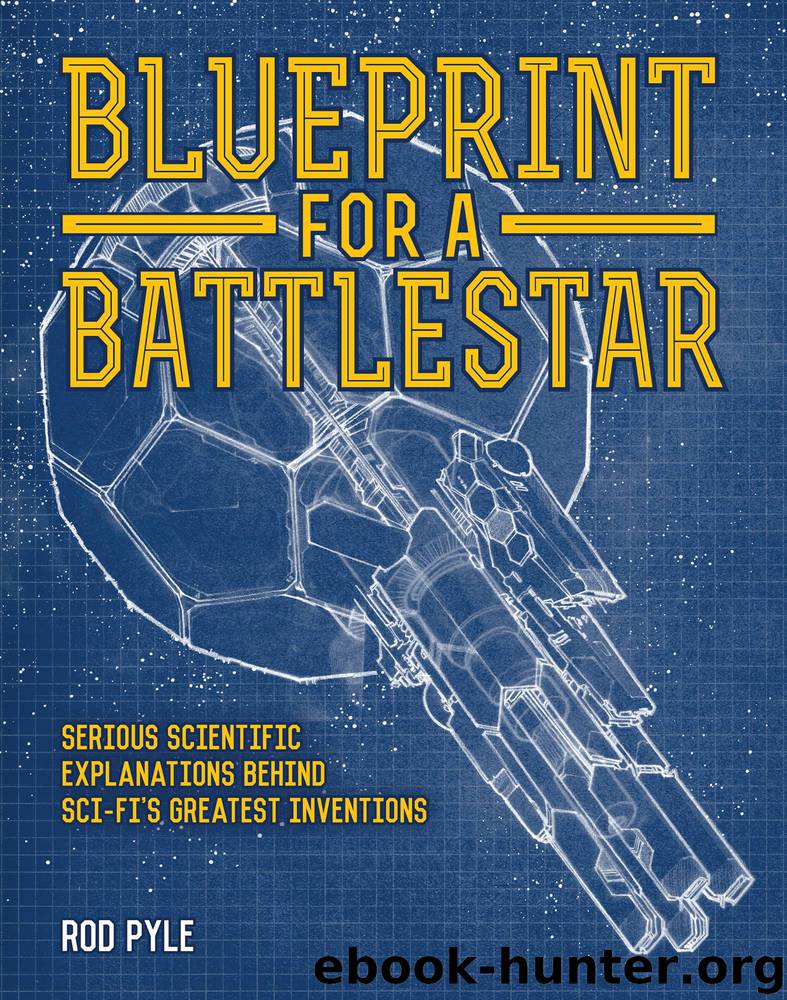Blueprint for a Battlestar by Rod Pyle

Author:Rod Pyle
Language: eng
Format: epub
Publisher: MBI
Published: 2016-04-15T04:00:00+00:00
FEELING HANDS
Enabling robots to understand their environment is a huge challenge for robot-makers. A large part of this is measuring input from the hands—touch pressure, temperature, and other stimulation to the hand are critical to reproducing human behavior and utility via robotic dexterity.
Crude robots have been around for decades, but in 2000 the Honda corporation stunned the world with the introduction of ASIMO (Advanced Step in Innovative Mobility), a walking, vaguely humanoid machine whose primary purpose was to be a technology demonstrator and inspiration to young people. ASIMO can run at almost four mph and stands about five feet tall. While the machine has the ability to walk, run, and even avoid obstacles with minimal human intervention, that is about the scope of its humanoid characteristics. It is also expensive, costing $150,000 a month to lease.
A few years later, another Japanese company began marketing Guard Robo, a mechanized security unit. Able to operate via remote control or autonomously, the machine can follow a programmed patrol path on its own, but any machine-to-human intervention is still overseen by humans, and it is not authorized to shoot autonomously...yet.
More mission-critical is Robonaut, NASA’s most advanced robot yet. Robonaut is more humanoid than most, and by far the most anthropomorphic ever sent to space. Designed for dexterity over brute strength, Robonaut could be considered the inverse to Canadarm, the remote robotic arm used on the Space Shuttle. The resemblance to spacesuit-clad astronauts is no coincidence—Robonaut was purpose-designed to work comfortably next to astronauts with the same tools and physical restraints. An improved version, Robonaut 2 (cleverly designated R2) was flown to the International Space Station in 2011 and performed a number of tests successfully during the mission.
All these machines have some level of autonomy. Robonaut 2 was designed to be given specific tasks, then left to finish them without continuous human oversight. A slightly more ominous development would be Atlas, a 330-pound ‘robo-sapiens’ machine built by Boston Dynamics with money from DARPA. Atlas stands six feet tall and looks an awful lot like the Terminator. At this point, according to Atlas’s developers, its mental capabilities amount to roughly those of a one-year-old child. But the machine has been designed with the ability to learn. The challenge that DARPA set up to test this semi-autonomous robot involved crossing uneven ground, opening doors, throwing switches, and turning valves.
DARPA has also been busy designing cyborgs—cybernetic organisms—the slightly terrifying blend of people and machines. Early experimentation centered on controlling rodents electronically, but now growing insects with microcontrollers (all the better to spy on the bad guys) is the state of the art. Arming dragonflies with micro-lasers seems to be around the corner.
One of the recent iterations of the Japanese perfection of female androids is called Actroid. First debuted in 2003, Actroid is designed, in the words of its creator, Hiroshi Ishiguro of Osaka University, to be ‘a perfect secretary who smiles and flutters her eyelids...’ The convergence of humans and machines, and particularly the appearance of part-human, part-machine
Download
This site does not store any files on its server. We only index and link to content provided by other sites. Please contact the content providers to delete copyright contents if any and email us, we'll remove relevant links or contents immediately.
The Complete Stick Figure Physics Tutorials by Allen Sarah(7135)
Secrets of Antigravity Propulsion: Tesla, UFOs, and Classified Aerospace Technology by Ph.D. Paul A. Laviolette(4974)
Thing Explainer by Randall Munroe(3782)
The River of Consciousness by Oliver Sacks(3412)
The Order of Time by Carlo Rovelli(3071)
How To by Randall Munroe(2911)
I Live in the Future & Here's How It Works by Nick Bilton(2839)
A Brief History of Time by Stephen Hawking(2819)
What If?: Serious Scientific Answers to Absurd Hypothetical Questions by Randall Munroe(2542)
The Great Unknown by Marcus du Sautoy(2532)
Midnight in Chernobyl by Adam Higginbotham(2384)
Blockchain: Ultimate Step By Step Guide To Understanding Blockchain Technology, Bitcoin Creation, and the future of Money (Novice to Expert) by Keizer Söze(2379)
Networks: An Introduction by Newman Mark(2264)
The Meaning of it All by Richard Feynman(2213)
Easy Electronics by Charles Platt(2204)
The Tao of Physics by Fritjof Capra(2162)
Midnight in Chernobyl: The Untold Story of the World's Greatest Nuclear Disaster by Adam Higginbotham(2074)
When by Daniel H Pink(2019)
Introducing Relativity by Bruce Bassett(2015)
